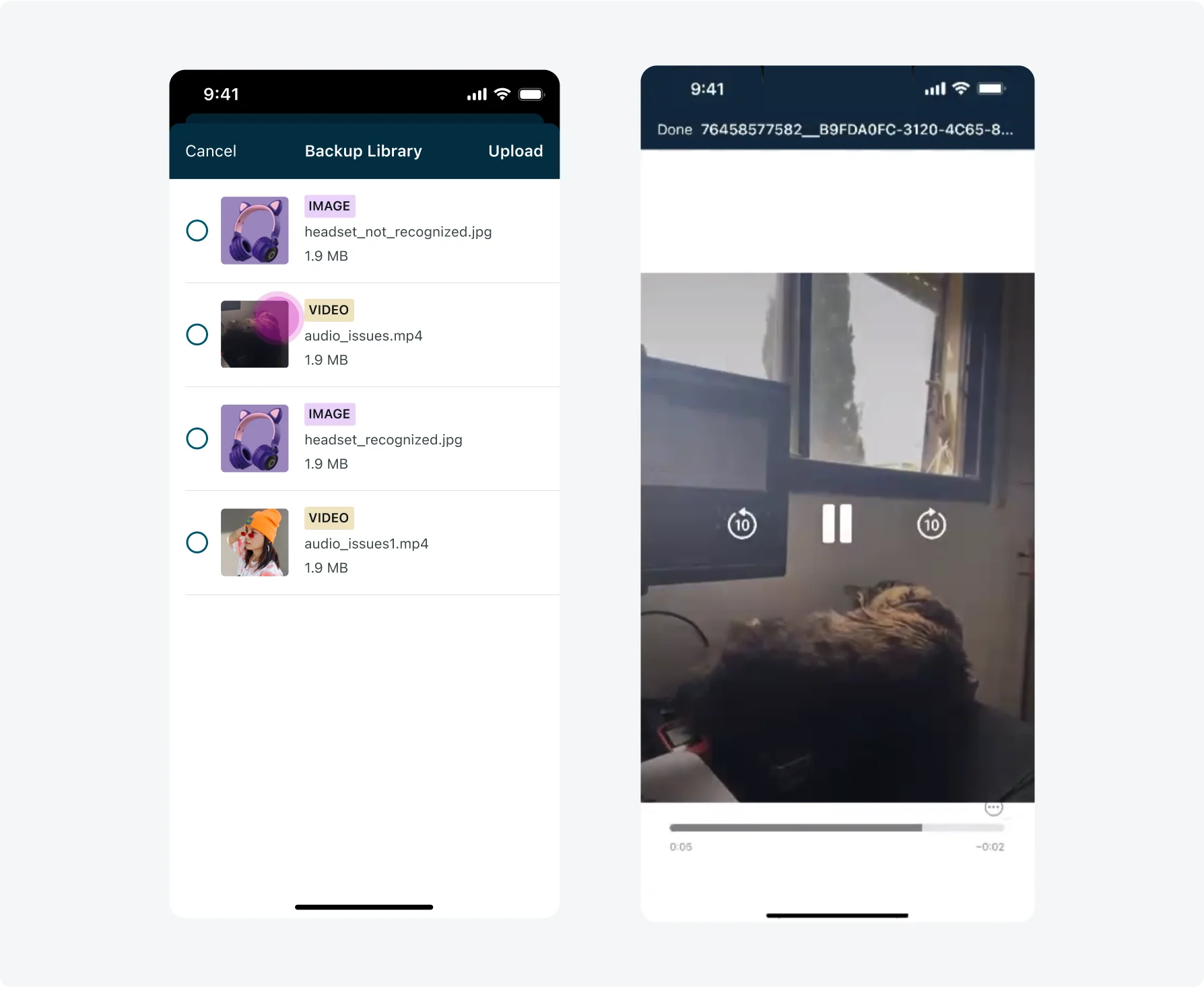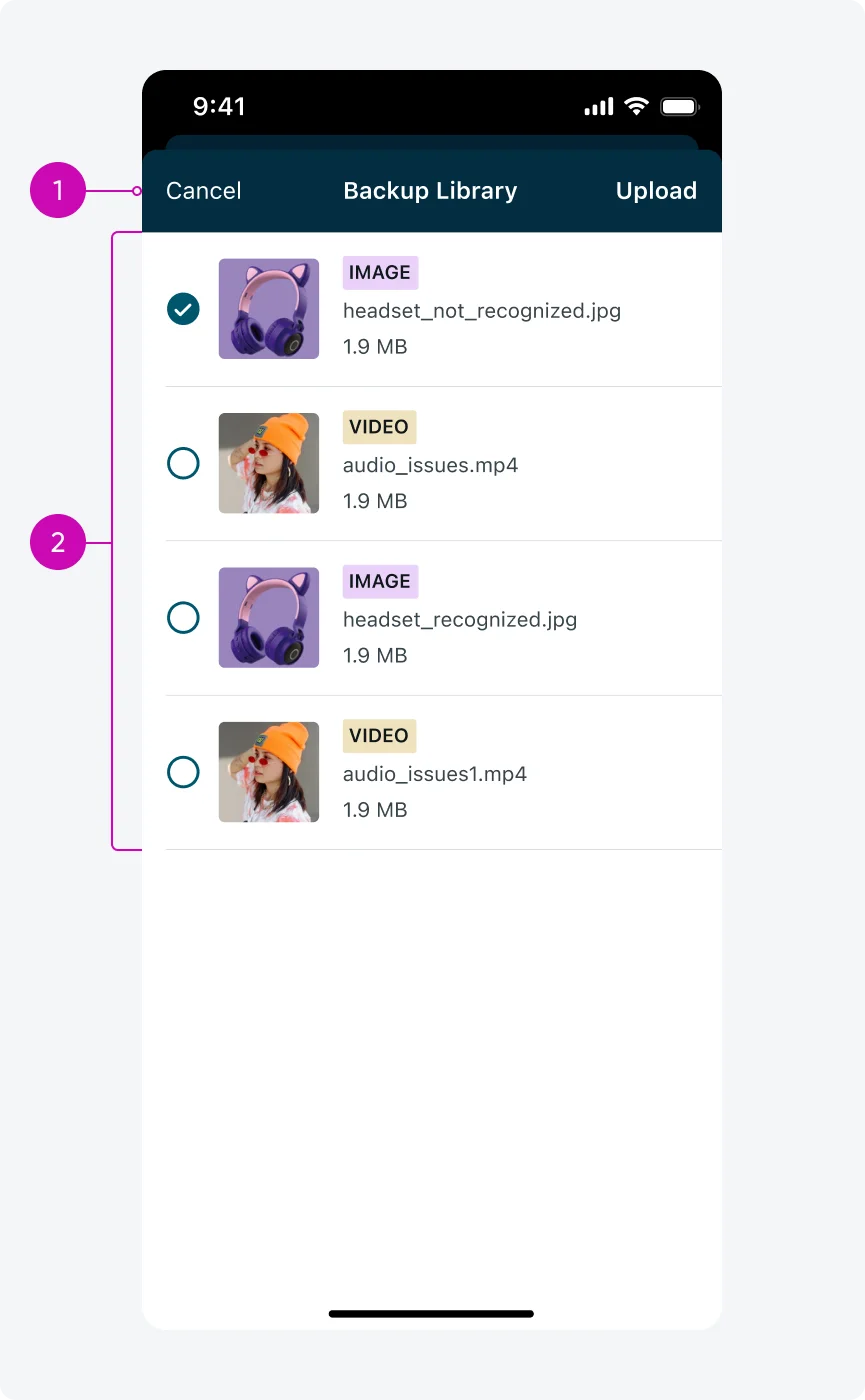
iOS
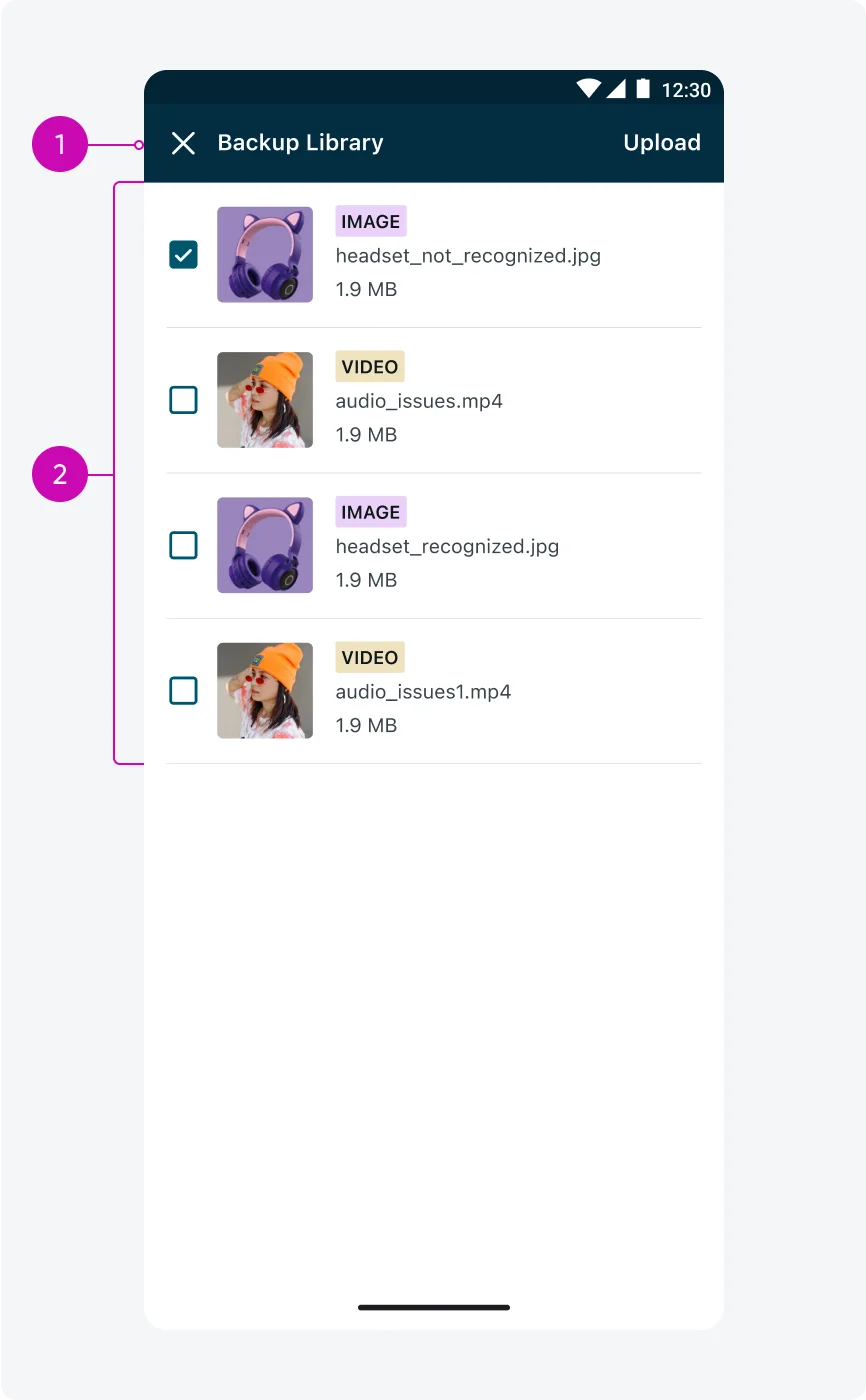
Android
- Top navigation bar: Displays the title ("Backup Library") along with two actions:
- Cancel - Closes the screen without selecting or uploading any files.
- Upload - Initiates the upload for selected attachments from the backup library.
- Attachment cards: A list of available attachments that were previously captured using the Camera source and failed to upload. Each attachment card includes:
- Selector control - Allows users to select one or multiple attachments for upload.
- Thumbnail preview - Tapping opens a full-screen view of the image or video.
- File format tag - Indicates the file type (Image or Video).
- File name and size - Helps users identify each attachment.
Usage
The backup library automatically saves a secure copy of any failed attachment captured using the Camera source, this ensures users can recover the file later without needing to retake it. When you tap the Camera icon from any screen, and a backup file is available, you'll see a menu with two options:
- Take a Photo or Video (default)
- Add from Backup Library
Behavior - when the backup library is enabled:
- If an upload fails and the user exits the Upload Manager without resolving the failures, a copy of the failed files is saved locally in the backup library (only for media files that were captured using the camera directly into the app).
- When the user taps the Camera icon (from any screen) to add a new attachment, and backup media files are available, instead of opening the camera directly - a menu will appear with two options:
- Take a Photo or Video (default)
- Add from Backup Library
- If the user selects “Add from Backup Library”, a modal will open with all of the saved backup files. The user can select a single or multiple files (multi-select) and upload them.
- Successfully uploaded backup files are removed from the backup library automatically.
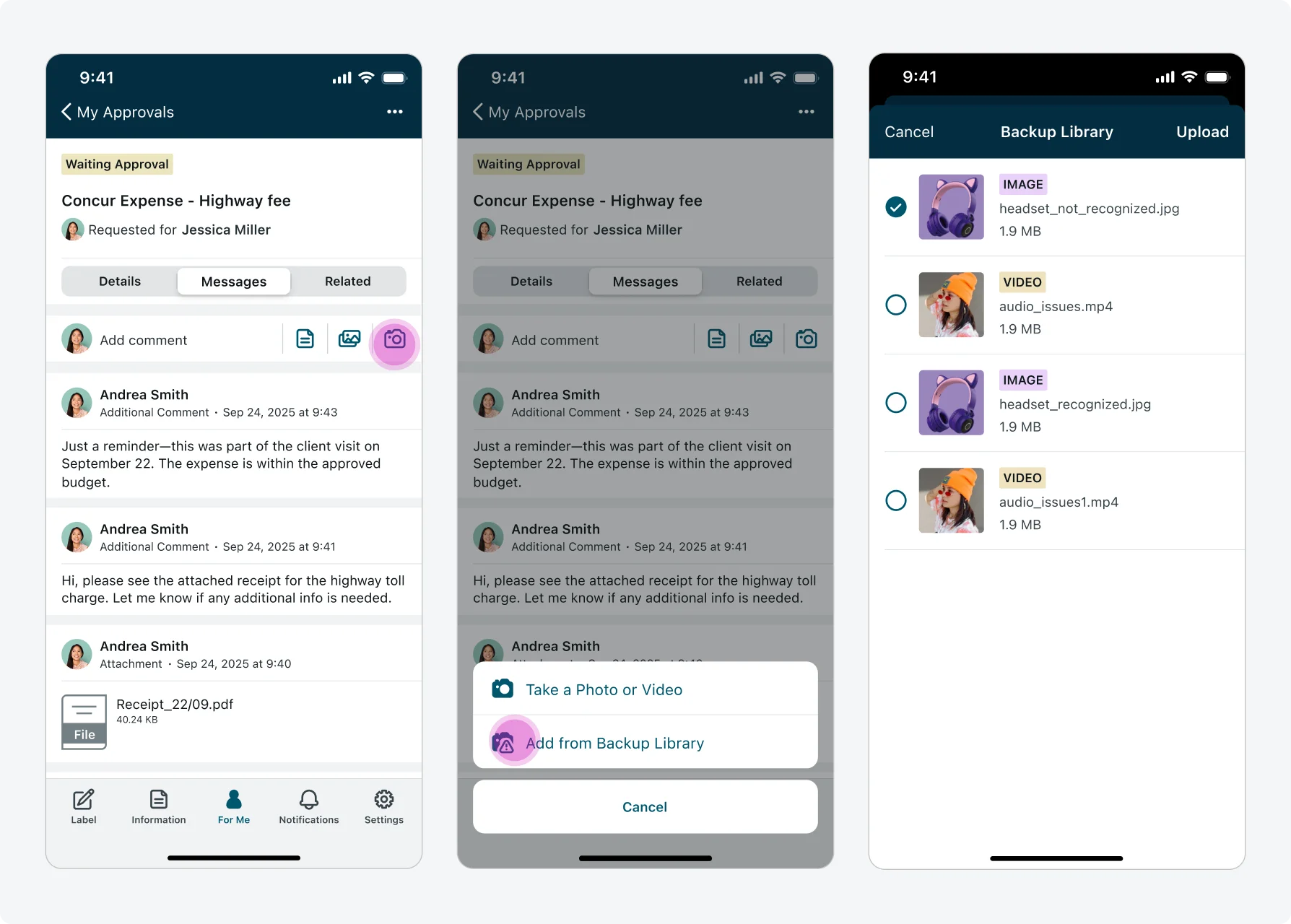
Configuration
Admins can enable the backup library for camera sources to allow a temporary local storage of photos and videos captured using the device's camera. This helps prevent data loss when uploads fail due to connectivity issues, app crashes, or user exit.
Admin-configurable options:
- Enable backup library: Off by default - must be enabled manually.
- Set retention period: Define how long (in hours) the files are stored locally before they are automatically deleted.
Important notes:
- Camera-only: The backup library applies only to files captured using the Camera source. Files from gallery or file system are not backed up, as they already exist on the device or in the cloud.
- Encrypted storage: Files are encrypted and not visible or accessible outside the app.
- Security considerations: Before enabling this feature, admins should review their organization’s data protection policies. While the backup library is secure, it involves local storage of potentially sensitive content.
Responsive behaviors
The Backup Library stretches edge-to-edge and adjusts automatically to fit the width of the device. It supports both portrait and landscape orientations without affecting functionality or layout.
Landscape mode
This is what the Backup Library looks on Landscape mode:
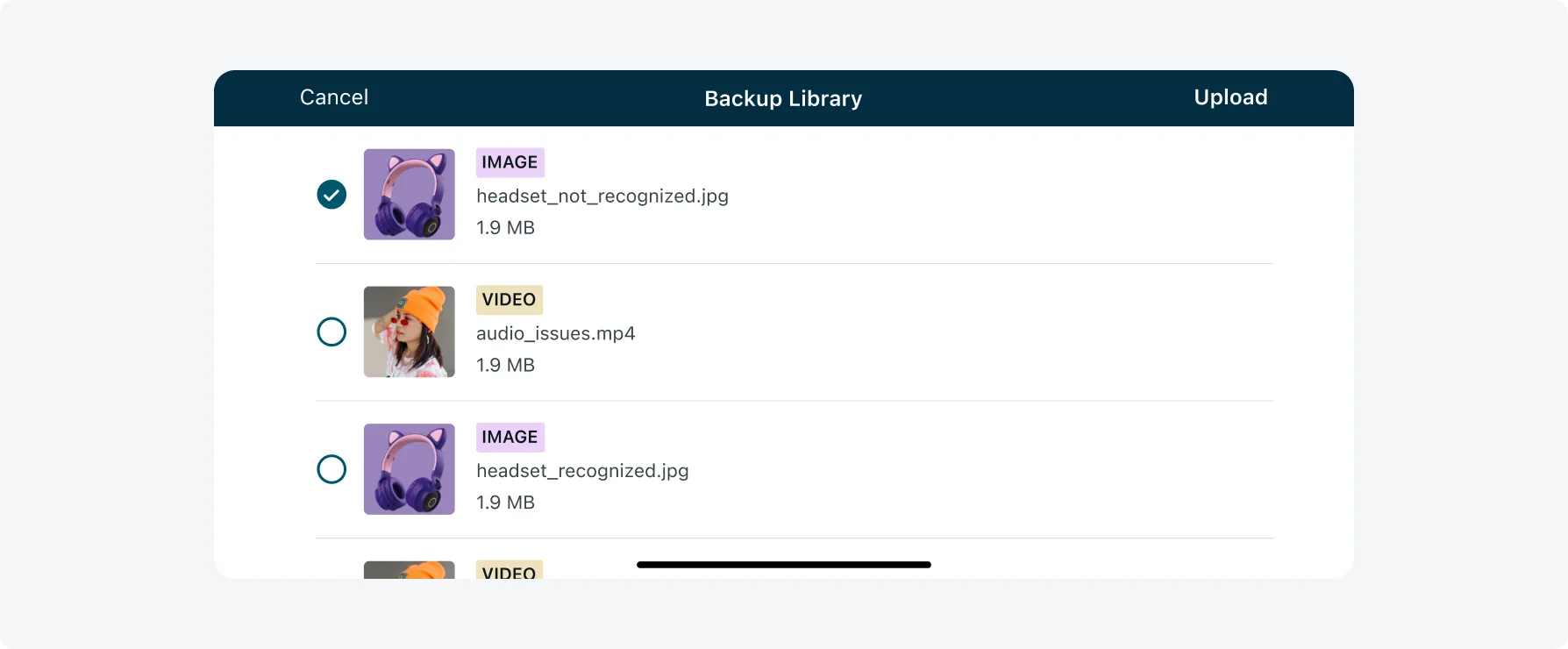
iOS
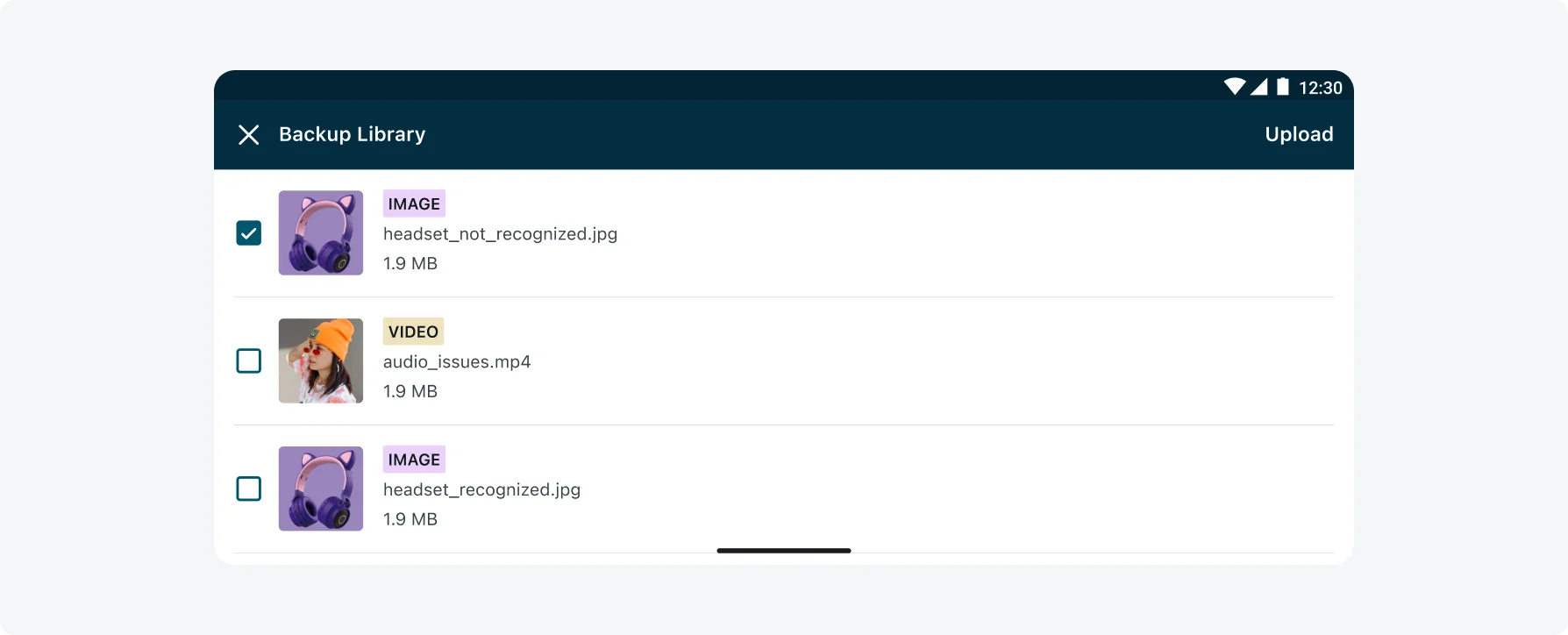
Android
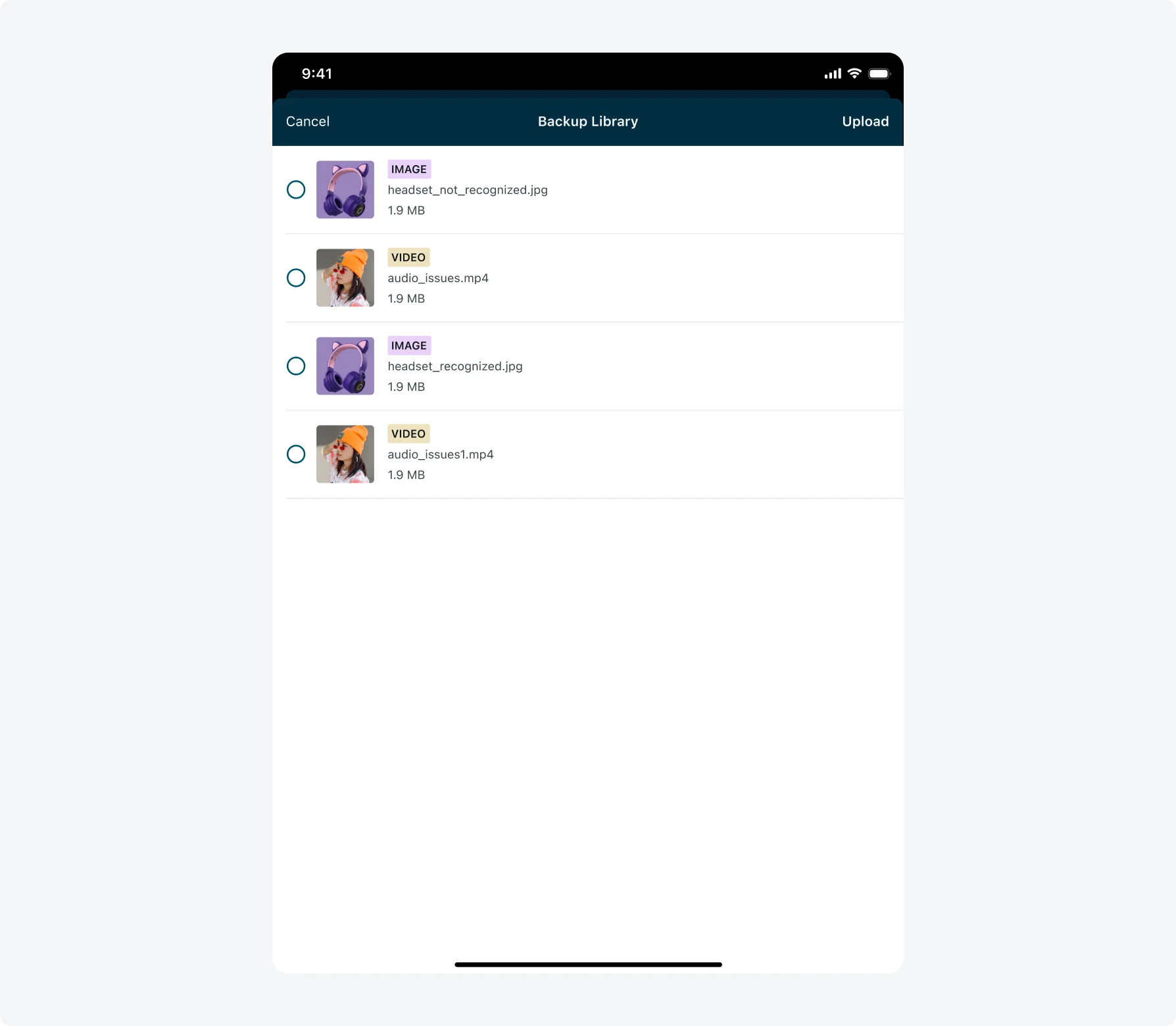
Interactions
1. Failed upload triggers backup
User captures photo using Camera → Upload fails → Upload Manager is closed → File is backed up automatically in the backup library (if backup library is enabled).
2. Access backup library
If backup files are available - when a user taps the Camera icon on any screen, a menu will appear with an additional option to select the file from the backup library (instead of opening the camera directly).
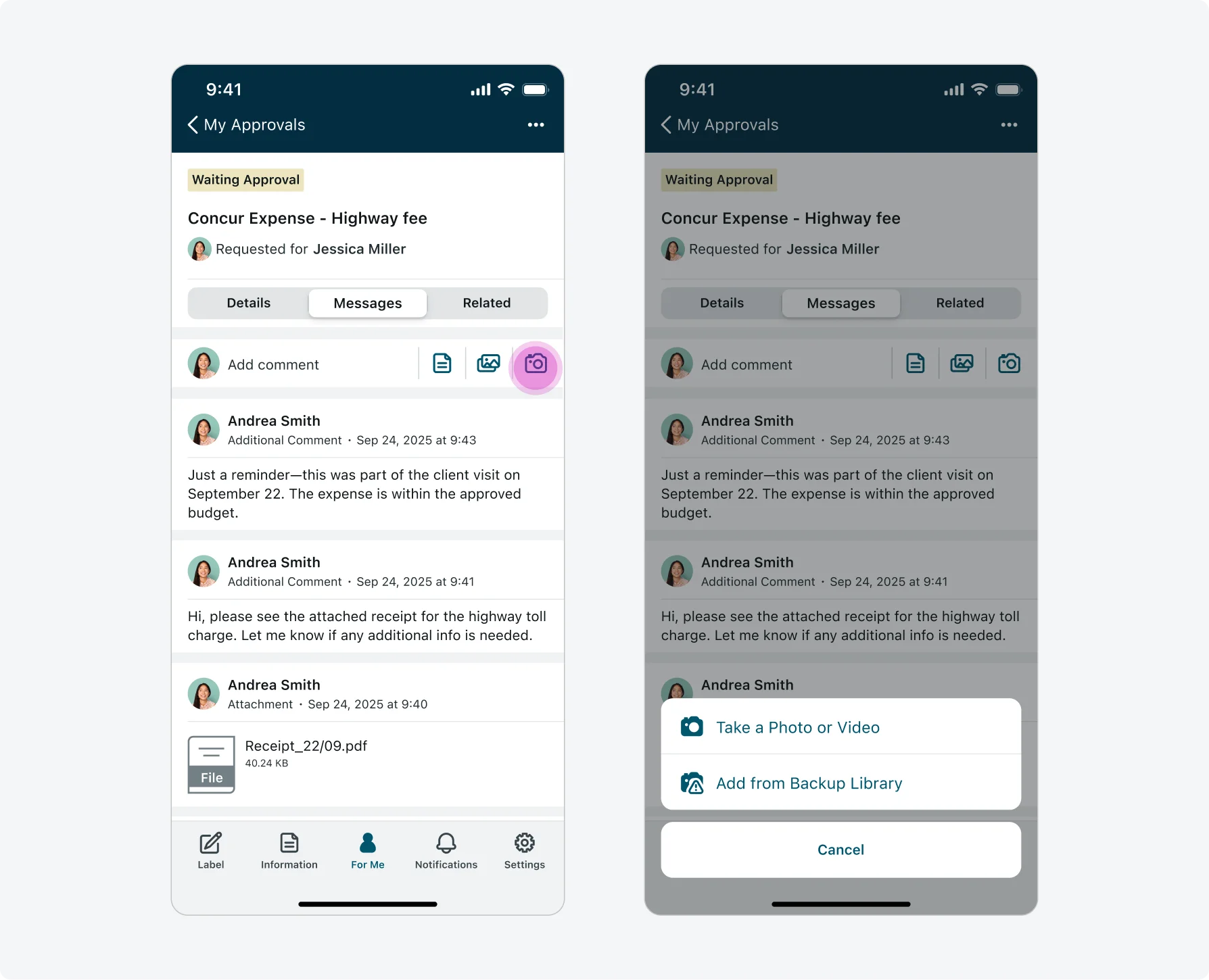
3. Multi-select
Users can select multiple attachments from the Backup Library for upload. Each attachment can be selected by tapping the selection control located to the left of its thumbnail.
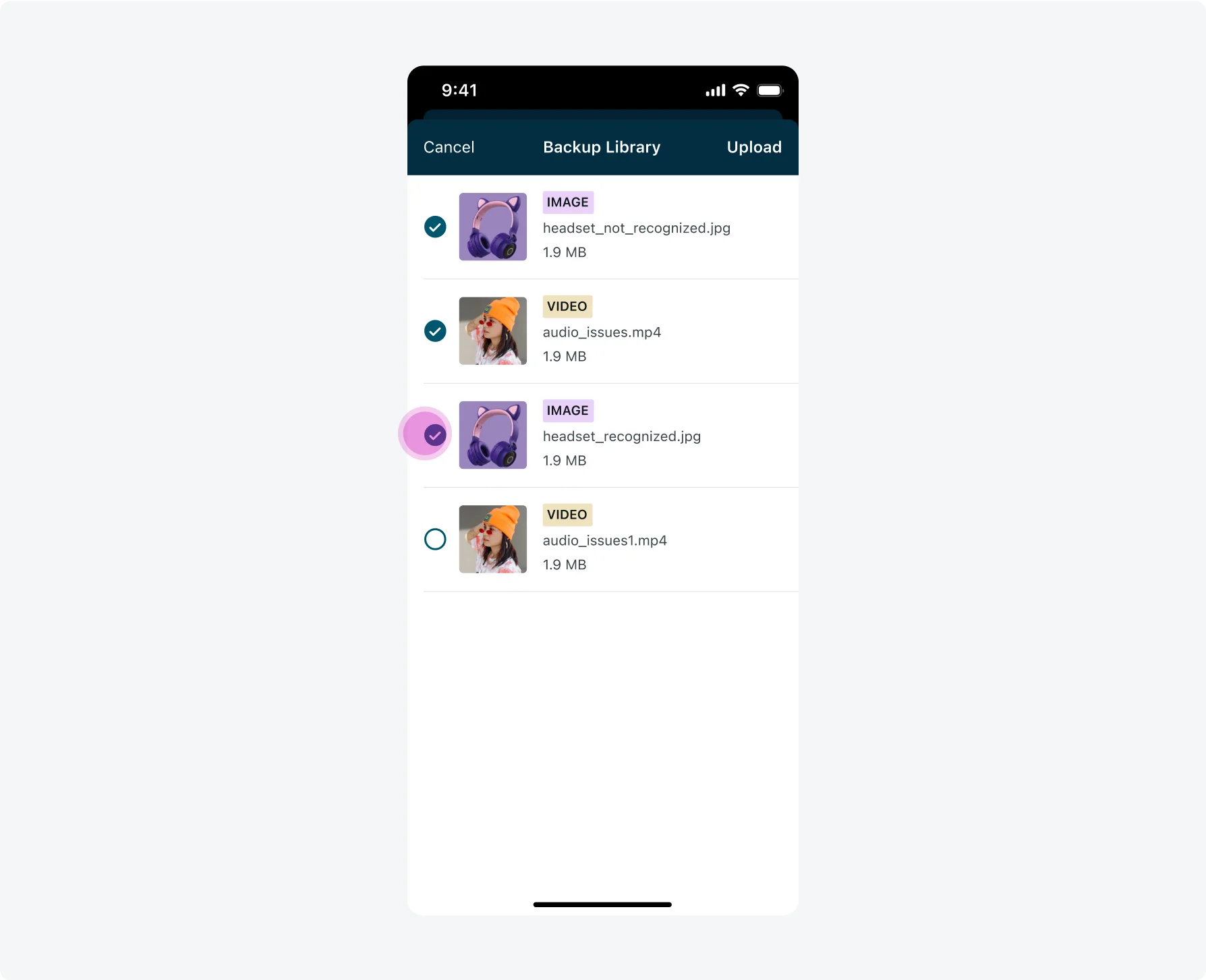
4. Full-screen media view
When a user taps on an image/video thumbnail or details in the Backup Library, it opens in full-screen view in a modal to provide an expanded preview.
- iOS supports full-screen view for both images and videos.
- Android supports full-screen view only for images.
